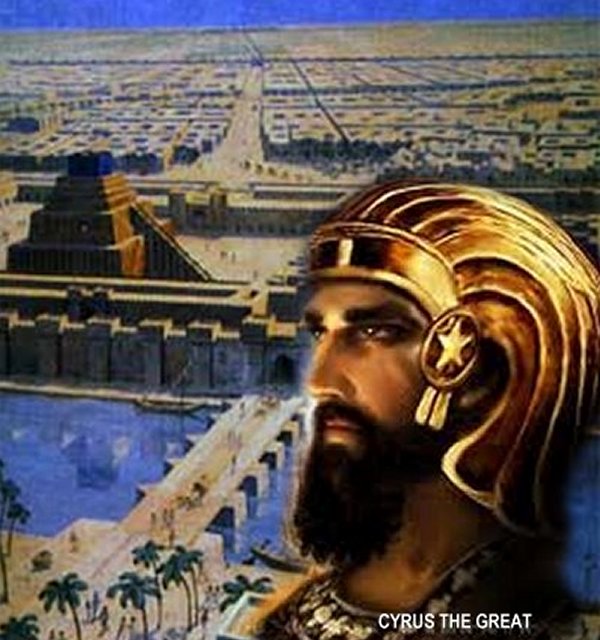Legacy Of The Ancients: Cyrus The Great Cylinder – The Charter Of Human Rights
A. Sutherland - AncientPages.com - Cyrus the Great was “a worthy ruler and lawgiver” according to the Greeks, while the Persians called him "father" and the Jews regarded him as “the Lord’s anointed”.
Cyrus the Great is considered one of the most outstanding figures in human history. He was an intelligent ruler with diplomatic and military skills, who must be credited for his achievements in creating and maintaining the Achaemenid Persian Empire, the world's largest ancient empire.
 Persian Empire Map During King Cyrus The Great
Persian Empire Map During King Cyrus The Great
The Cyrus Cylinder sometimes referred to as the first “bill of human rights,” traces its origins to the Persian king Cyrus the Great’s conquest of Babylon in the sixth century B.C.
Almost 2,600 years later, its remarkable legacy continues to shape contemporary political debates, cultural rhetoric, and philosophy.
The Cyrus Cylinder is one of the most celebrated objects in world history. Its replica is kept at the United Nations Headquarters in New York.
“You could almost say that the Cyrus Cylinder is a history of the Middle East in one object, creating a link to a past that we all share and to a key moment in history that has shaped the world around us,” said Neil MacGregor, director of the British Museum.
“Objects are uniquely able to speak across time and space, and this object must be shared as widely as possible.”
The Cylinder—a football-sized, barrel-shaped clay object covered in Babylonian cuneiform, one of the earliest written languages—announced Cyrus’ victory and his intention to allow freedom of worship to communities displaced by the defeated ruler Nabonidus. At the time, such declarations were not uncommon, but Cyrus’ was unique in its nature and scope.
In this text, a clay cylinder now in the British Museum, Cyrus describes how he conquers the old city. Nabonidus is considered a tyrant with strange religious ideas, which causes the god Marduk to intervene. That Cyrus thought of himself as chosen by a supreme god, is confirmed by Second Isaiah; his claim that he entered the city without struggle corroborates the same statement in the Chronicle of Nabonidus.
When contextualized with other contemporary sources, such as the Bible’s Book of Ezra, it becomes evident that Cyrus allowed displaced Jews to return to Jerusalem. Under Cyrus (ca. 580–530 B.C.), the Persian Empire became the largest and most diverse the world had known to that point.
Next generations of rulers considered the Empire to be the ideal example of successful governance across multiple cultures, languages, and vast territories.
Cyrus’ declarations of tolerance, justice, and religious freedom provided inspiration for generations of philosophers and policymakers, from Ancient Greece to the Renaissance, and from the Founding Fathers to modern-day Iran, so much so that a copy now resides in the United Nations’ headquarters in New York.
The message of the Cylinder and the larger legacy of Cyrus’ leadership have been appropriated and reinterpreted over millennia, beginning with its creators. The Babylonian scribe who engraved the Cylinder attributed Cyrus’ victory to the Babylonian god Marduk, a stroke of what could be considered royal and religious propaganda.
In the fourth century B.C., the Greek historian Xenophon wrote Cyropaedia, a text that romanticizes the philosophies and education of Cyrus as the ideal ruler, which greatly influenced both Alexander the Great and, much later, Thomas Jefferson in his creation of the Declaration of Independence.
When the Cylinder was rediscovered in 1879, it immediately entered the fray of public debate as invaluable proof of the historical veracity of events described in biblical scripture. In the early 20th century, supporters of the creation of the state of Israel compared the actions of British King George V to those of Cyrus, allowing Jews to return to Jerusalem.
When the Cylinder was loaned to Iran in 2010, it was viewed by more than 1 million people, as one of the most visited exhibitions in the country’s history.
The biblical scholars have traditionally considered Cylinder's text as corroborative evidence of Cyrus' policy of the repatriation of the Jewish people following their Babylonian captivity. The Book of Ezra attributes this act to Cyrus because the text refers to the restoration of cult sanctuaries and the repatriation of deported peoples. The Book of Ezra is an important account of the Jews' regathering, and their struggle to survive and rebuild what had been destroyed.
However, this interpretation has been disputed, as the text identifies only Mesopotamian sanctuaries, and does not mention Jews, Jerusalem, or Judea.
Mohammad Reza Pahlavi, the last Shah of Iran referred to the Cylinder as the first declaration of universal human rights, but again Pahlavi's point of view was rejected by some historians as anachronistic and a misunderstanding of the Cylinder's generic nature. According to many scholars, the Cylinder represents a typical statement often made by new monarchs at the beginning of their reign.
There are historians, however, who accept that the Cyrus Cylinder is an early formulation of human rights, simply an attempt to solve a long-lasting problem regarding human rights.
Written by - A. Sutherland - AncientPages.com Senior Staff Writer
Copyright © AncientPages.com This material may not be published, broadcast, rewritten or redistributed in whole or part without the express written permission of AncientPages.com
More From Ancient Pages
-
 Amazing Victorian Time Capsule – 135-Year-Old Message In A Bottle Found In Edinburgh
Archaeology | Nov 22, 2022
Amazing Victorian Time Capsule – 135-Year-Old Message In A Bottle Found In Edinburgh
Archaeology | Nov 22, 2022 -
 Did The Plague Of Athens Come From Egypt Or Is It A Myth?
Archaeology | Dec 13, 2023
Did The Plague Of Athens Come From Egypt Or Is It A Myth?
Archaeology | Dec 13, 2023 -
 Dozens Of Unique 2,500-Year-Old Ceremonial Treasures Discovered In A Drained Peat Bog
Archaeology | Jan 27, 2023
Dozens Of Unique 2,500-Year-Old Ceremonial Treasures Discovered In A Drained Peat Bog
Archaeology | Jan 27, 2023 -
 183-Million-Year-Old Fossils: Jurassic Marine World In A Farmer’s Field
Fossils | Jul 31, 2022
183-Million-Year-Old Fossils: Jurassic Marine World In A Farmer’s Field
Fossils | Jul 31, 2022 -
 Aboriginal Creation Story Of Marala Was True – World’s Largest Dinosaur Footprints Confirm Ancient Creation Myth
Archaeology | Mar 29, 2017
Aboriginal Creation Story Of Marala Was True – World’s Largest Dinosaur Footprints Confirm Ancient Creation Myth
Archaeology | Mar 29, 2017 -
 Fenrir Killed At Ragnarok By Vidar Who Avenged His Father Odin’s Death
Featured Stories | Dec 10, 2018
Fenrir Killed At Ragnarok By Vidar Who Avenged His Father Odin’s Death
Featured Stories | Dec 10, 2018 -
 2,000-Year-Old Roman Road Discovered In Cluj-Napoca, Romania
Archaeology | Jan 23, 2023
2,000-Year-Old Roman Road Discovered In Cluj-Napoca, Romania
Archaeology | Jan 23, 2023 -
 Extremely Rare Fossils Of 160-Million-Year-Old Sea Spider And Its Diversity By The Jurassic
Fossils | Aug 22, 2023
Extremely Rare Fossils Of 160-Million-Year-Old Sea Spider And Its Diversity By The Jurassic
Fossils | Aug 22, 2023 -
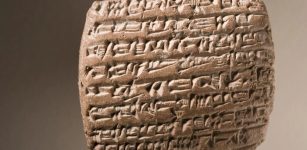 Locations Of 11 Lost Ancient Cities Revealed On 4,000-Year-Old Artifacts
Archaeology | Nov 15, 2017
Locations Of 11 Lost Ancient Cities Revealed On 4,000-Year-Old Artifacts
Archaeology | Nov 15, 2017 -
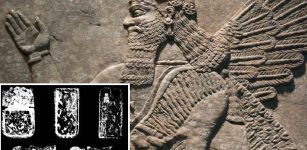 Aluminum Was Used At Least 7,000 Years Ago – Long Before The Metal’s Official Invention In 1825
Ancient Technology | Jul 10, 2017
Aluminum Was Used At Least 7,000 Years Ago – Long Before The Metal’s Official Invention In 1825
Ancient Technology | Jul 10, 2017 -
 Mysterious 3,000-Year-Old Underwater Urartu Castle Discovered
Archaeology | Nov 22, 2017
Mysterious 3,000-Year-Old Underwater Urartu Castle Discovered
Archaeology | Nov 22, 2017 -
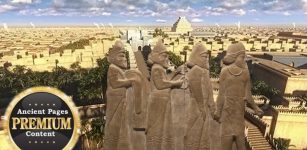 Unknown Ancient God Was Worshipped In Mesopotamia – Sacred Texts And Archaeology Reveal
Civilizations | May 9, 2018
Unknown Ancient God Was Worshipped In Mesopotamia – Sacred Texts And Archaeology Reveal
Civilizations | May 9, 2018 -
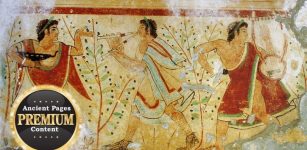 Intriguing Evidence Etruscans May Have Visited Canada
Civilizations | Sep 30, 2018
Intriguing Evidence Etruscans May Have Visited Canada
Civilizations | Sep 30, 2018 -
 Plants, Trees And Food Brought To Earth From Space
Featured Stories | Dec 7, 2014
Plants, Trees And Food Brought To Earth From Space
Featured Stories | Dec 7, 2014 -
 Nine Great Wall Beacon Towers Discovered In China’s Inner Mongolia
Archaeology | Apr 21, 2020
Nine Great Wall Beacon Towers Discovered In China’s Inner Mongolia
Archaeology | Apr 21, 2020 -
 Ancient Underwater ‘Lion City’ Rests Beneath The Thousand Island Lake
News | Feb 11, 2014
Ancient Underwater ‘Lion City’ Rests Beneath The Thousand Island Lake
News | Feb 11, 2014 -
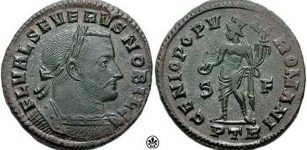 On This Day In History: Western Roman Emperor Severus II Died – On Sep 16, 307
News | Sep 16, 2016
On This Day In History: Western Roman Emperor Severus II Died – On Sep 16, 307
News | Sep 16, 2016 -
 ‘Green’ Saudi Arabia Was Home To A 350,000-Year-Old Human Settlement
Archaeology | May 18, 2021
‘Green’ Saudi Arabia Was Home To A 350,000-Year-Old Human Settlement
Archaeology | May 18, 2021 -
 Red Paint On 1,000-Year-Old Gold Mask From Peru Contains Human Blood Proteins
Archaeology | Nov 1, 2021
Red Paint On 1,000-Year-Old Gold Mask From Peru Contains Human Blood Proteins
Archaeology | Nov 1, 2021 -
 Viking Burial Rituals: High Ancient Funeral Pyre Reflected High Social Status
Ancient Traditions And Customs | Mar 13, 2017
Viking Burial Rituals: High Ancient Funeral Pyre Reflected High Social Status
Ancient Traditions And Customs | Mar 13, 2017


